The famous Wartburg Castle, where Martin Luther spent a year translating the New Testament from Latin into German, is on a hill overlooking the town of Eisenach. Eisenach is also the home of Ines Müller, whose 3rd great grandmother was "Annie" Leontine Charlotte Agnes Eugenie Kleinsteuber, the sister of the Kleinsteubers who immigrated to Actinolite, Ontario.
The images above show the castle from the town of Eisenach below the hill, and a painting of Luther preaching in the Castle chapel. The images below show map directions between Gotha and Wartburg, Martin Luther's desk, a woodcut of the 1817 student gathering at Wartburg, several images of the castle and a couple of the dining venue.
Story continues below the gallery.
Click on photos to enlarge:
The images above show the castle from the town of Eisenach below the hill, and a painting of Luther preaching in the Castle chapel. The images below show map directions between Gotha and Wartburg, Martin Luther's desk, a woodcut of the 1817 student gathering at Wartburg, several images of the castle and a couple of the dining venue.
Story continues below the gallery.
Click on photos to enlarge:
Wartburg is located about 45km from Gotha, or a 40 minute drive to the site. It is located in the Thuringia Forest just a few kilometers to the northwest of Ruhla.
The Wartburg is a castle originally built in the Middle Ages, situated on a 410 metres (1,350 ft) precipice to the southwest of Eisenach, in the state of Thuringia, Germany. In 1999, UNESCO added Wartburg Castle to the World Heritage List. It was the home of St. Elisabeth of Hungary, the place where Martin Luther translated the New Testament of the Bible into German, the site of the Wartburg festival of 1817 and the supposed setting for the legendary Sängerkrieg. Wartburg is the most-visited tourist attraction in Thuringia after Weimar. Although the castle today still contains substantial original structures from the 12th through 15th centuries, much of the interior dates back only to the 19th-century period of Romanticism.
According to tradition, the castle (Burg) got its name when its founder first laid eyes on the hill upon which the castle now sits; enchanted by the site, he is supposed to have exclaimed, "Warte, Berg -- du sollst mir eine Burg tragen!" ("Wait, mountain -- you shall bear a castle for me!"). It is a German play on words for mountain (Berg) and fortress (Burg). In addition, Louis the Springer is said to have had clay from his lands transported to the top of the hill, which was not quite within his lands, so he might swear that the castle was built on his soil. In fact, the name probably derives from German: Warte, a kind of watchtower.
Wartburg Castle blends superbly into its forest surroundings and is in many ways 'the ideal castle'. Although it has retained some original sections from the feudal period, the form it acquired during the 19th-century reconstitution gives a good idea of what this fortress might have been at the height of its military and seigneurial power. It was during his exile at Wartburg Castle that Martin Luther translated the New Testament into German.
Towards the end of the 12th century, a literary court developed at Wartburg castle, attracted by Landgrave Hermann I, who surrounded himself with poets and musicians. The poetry of Walther von der Vogelweide describes the brilliant society life which gave rise to the episode of the singers' tourney at Wartburg Castle, a romanticized version of which inspired Richard Wagner's opera, Tannhäuser.
In 1221 Landgrave Ludwig IV, the son of Hermann, married Elizabeth of Hungary. Widowed in 1227, Elizabeth devoted herself to charitable works to which the Landgrave's family took exception. Driven out of Wartburg Castle with her three children, she founded a hospital in Marburg and lived her life by Franciscan principles. She was canonized in 1235, four years after her death.
The transfer of the seat of power to Gotha and subsequently to Weimar at the beginning of the 15th century marked the beginning of the castle's decline.
Under the protection of the Prince Elector of Saxony, Martin Luther stayed at Wartburg Castle in secret. Here he devoted himself to literature, producing a considerable body of work attested by his correspondence, from which many letters have survived. It was at Wartburg Castle that he made his translation of the New Testament into German. His exile came to an end in March 1522 and by the end of the 16th century, the memory of Luther was already attracting large numbers of pilgrims.
Goethe paid a visit in 1777 and made a drawing of the ruin which shows only the palace remaining partially intact. The poet suggested the creation of a museum, justified by the ever-growing numbers of pilgrims. After the Napoleonic wars, a national sentiment emerged which revelled in the image of ancient Germany as symbolized by Wartburg Castle.
In 1817, the students' associations organized an event which set the seal on this tendency, further confirmed by the revolution of March 1848. Wartburg Castle was to remain the headquarters of students' associations for the whole of Germany.
In the first half of the 19th century, on the initiative of the Grand Duke of Saxony, the entire site was completely renovated: the remains of the palace were raised from their ruins, the curtain wall restored, and the remainder of the buildings reconstructed under the supervision of architect Hugo von Ritgen.
In 1945, the bombing of Eisenach spared Wartburg, although the castle was later pillaged by Soviet troops. The German Democratic Republic made Wartburg Castle a national monument, major restoration work was carried out, and numerous commemorative ceremonies were held in connection with the religious connotations and symbolic value of the monument.
Since the reunification of Germany, restoration work has concentrated primarily on the interiors and on the problems of preserving the stonework on the palace facades.
Many people from many countries now visit Wartburg, and many amenities have been added, including several dining venues.
The Wartburg is a castle originally built in the Middle Ages, situated on a 410 metres (1,350 ft) precipice to the southwest of Eisenach, in the state of Thuringia, Germany. In 1999, UNESCO added Wartburg Castle to the World Heritage List. It was the home of St. Elisabeth of Hungary, the place where Martin Luther translated the New Testament of the Bible into German, the site of the Wartburg festival of 1817 and the supposed setting for the legendary Sängerkrieg. Wartburg is the most-visited tourist attraction in Thuringia after Weimar. Although the castle today still contains substantial original structures from the 12th through 15th centuries, much of the interior dates back only to the 19th-century period of Romanticism.
According to tradition, the castle (Burg) got its name when its founder first laid eyes on the hill upon which the castle now sits; enchanted by the site, he is supposed to have exclaimed, "Warte, Berg -- du sollst mir eine Burg tragen!" ("Wait, mountain -- you shall bear a castle for me!"). It is a German play on words for mountain (Berg) and fortress (Burg). In addition, Louis the Springer is said to have had clay from his lands transported to the top of the hill, which was not quite within his lands, so he might swear that the castle was built on his soil. In fact, the name probably derives from German: Warte, a kind of watchtower.
Wartburg Castle blends superbly into its forest surroundings and is in many ways 'the ideal castle'. Although it has retained some original sections from the feudal period, the form it acquired during the 19th-century reconstitution gives a good idea of what this fortress might have been at the height of its military and seigneurial power. It was during his exile at Wartburg Castle that Martin Luther translated the New Testament into German.
Towards the end of the 12th century, a literary court developed at Wartburg castle, attracted by Landgrave Hermann I, who surrounded himself with poets and musicians. The poetry of Walther von der Vogelweide describes the brilliant society life which gave rise to the episode of the singers' tourney at Wartburg Castle, a romanticized version of which inspired Richard Wagner's opera, Tannhäuser.
In 1221 Landgrave Ludwig IV, the son of Hermann, married Elizabeth of Hungary. Widowed in 1227, Elizabeth devoted herself to charitable works to which the Landgrave's family took exception. Driven out of Wartburg Castle with her three children, she founded a hospital in Marburg and lived her life by Franciscan principles. She was canonized in 1235, four years after her death.
The transfer of the seat of power to Gotha and subsequently to Weimar at the beginning of the 15th century marked the beginning of the castle's decline.
Under the protection of the Prince Elector of Saxony, Martin Luther stayed at Wartburg Castle in secret. Here he devoted himself to literature, producing a considerable body of work attested by his correspondence, from which many letters have survived. It was at Wartburg Castle that he made his translation of the New Testament into German. His exile came to an end in March 1522 and by the end of the 16th century, the memory of Luther was already attracting large numbers of pilgrims.
Goethe paid a visit in 1777 and made a drawing of the ruin which shows only the palace remaining partially intact. The poet suggested the creation of a museum, justified by the ever-growing numbers of pilgrims. After the Napoleonic wars, a national sentiment emerged which revelled in the image of ancient Germany as symbolized by Wartburg Castle.
In 1817, the students' associations organized an event which set the seal on this tendency, further confirmed by the revolution of March 1848. Wartburg Castle was to remain the headquarters of students' associations for the whole of Germany.
In the first half of the 19th century, on the initiative of the Grand Duke of Saxony, the entire site was completely renovated: the remains of the palace were raised from their ruins, the curtain wall restored, and the remainder of the buildings reconstructed under the supervision of architect Hugo von Ritgen.
In 1945, the bombing of Eisenach spared Wartburg, although the castle was later pillaged by Soviet troops. The German Democratic Republic made Wartburg Castle a national monument, major restoration work was carried out, and numerous commemorative ceremonies were held in connection with the religious connotations and symbolic value of the monument.
Since the reunification of Germany, restoration work has concentrated primarily on the interiors and on the problems of preserving the stonework on the palace facades.
Many people from many countries now visit Wartburg, and many amenities have been added, including several dining venues.
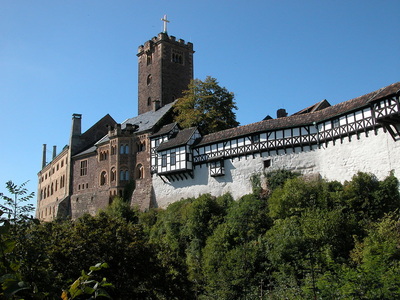
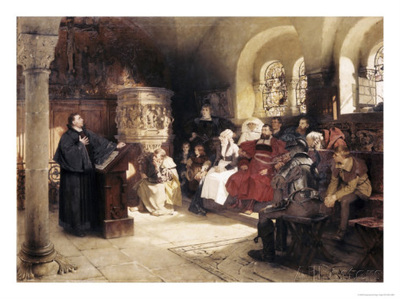
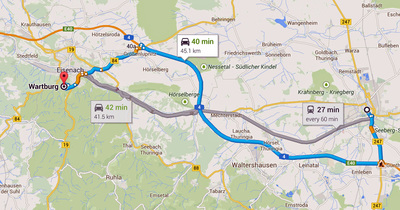
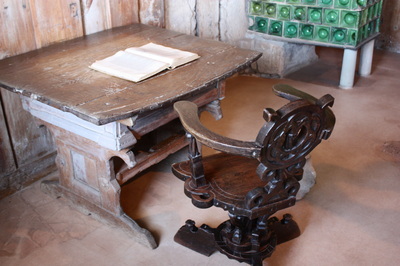
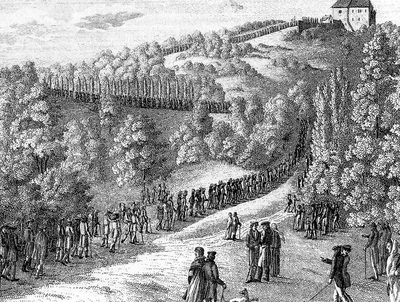
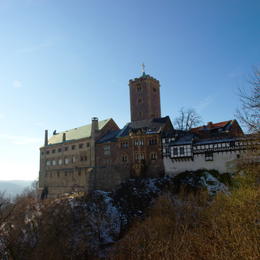

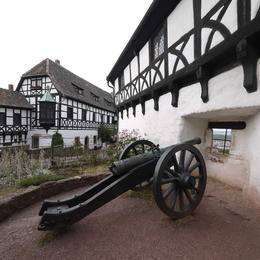
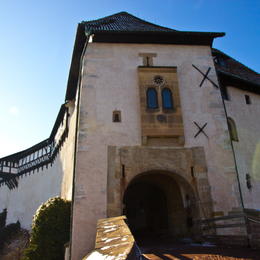
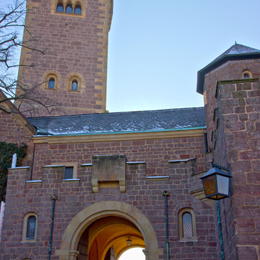
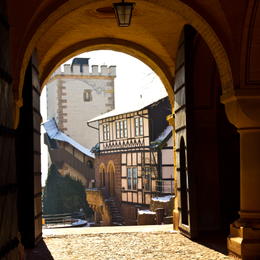
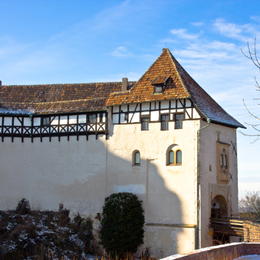

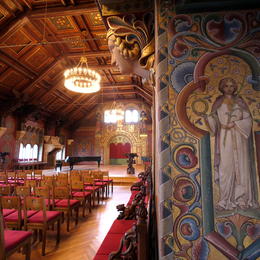
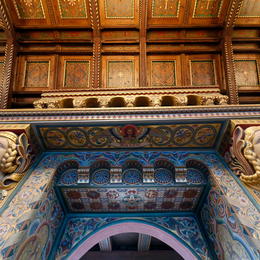
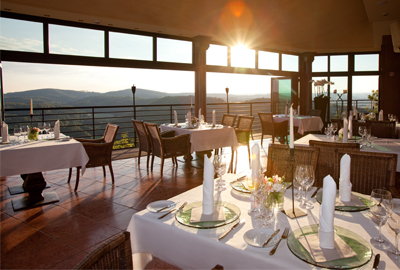
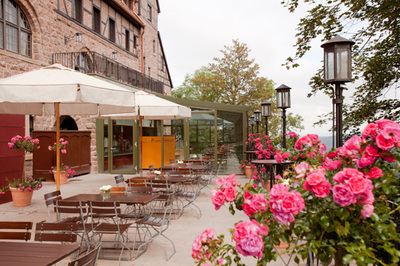
 RSS Feed
RSS Feed